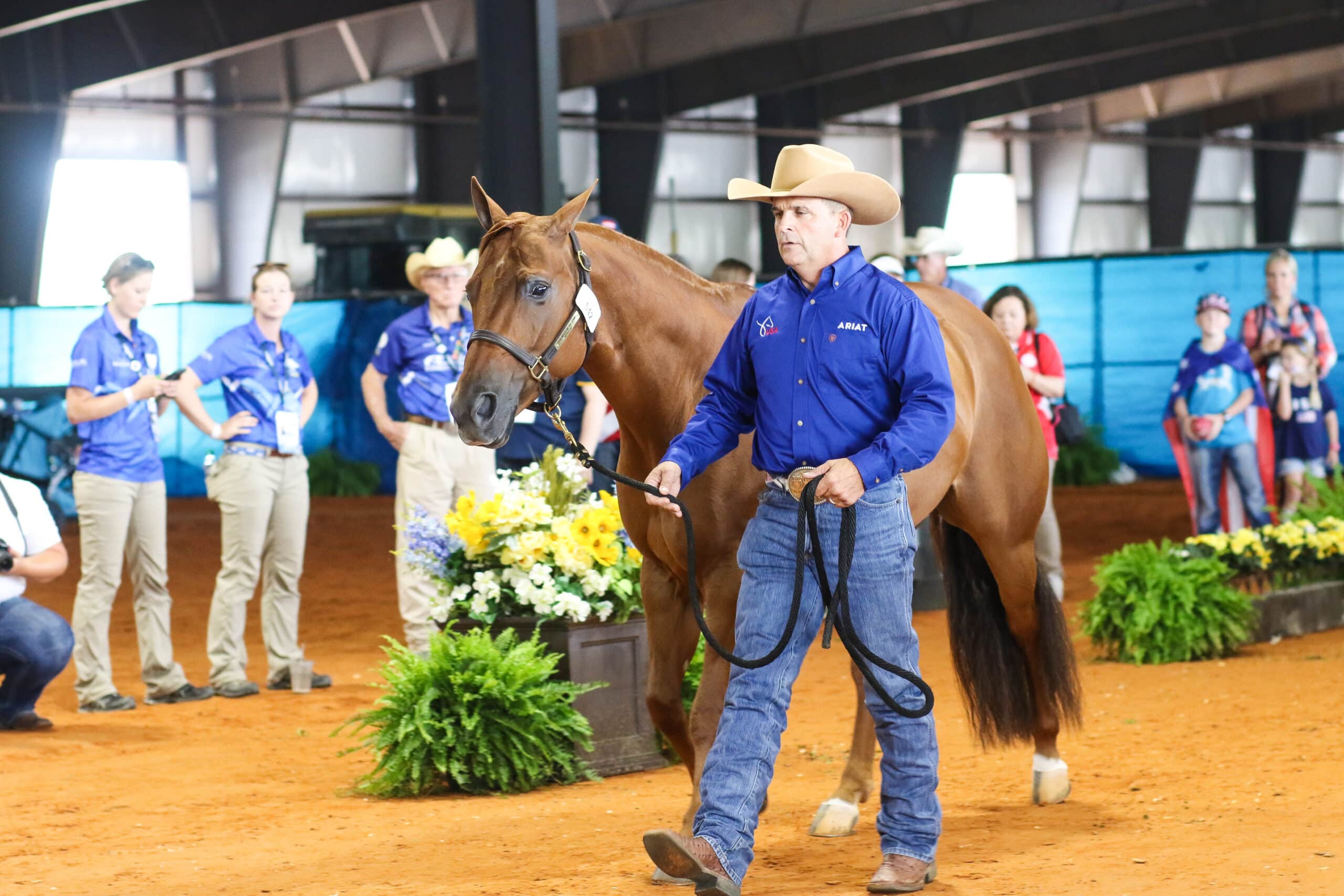Every barrel racer has had that moment when their horse trotted away, or they stepped on to start their ride and just felt something “off,” and it’s important to arm yourself with the knowledge to tell if your beloved horse is lame or feeling pain.
The “head bob” test is a fundamental method used to identify lameness and determine which leg might be causing the discomfort. However, it requires a keen eye and some practice to pinpoint the specific problem accurately.
How to read a head bob
The head bob occurs when a horse shifts weight off the sore leg with each stride, using the mass of their head and neck to compensate.
To begin the observation, stand perpendicularly to the horse at a distance of about 20 feet on a smooth, flat surface. It is essential to have a helper trot the horse past you while keeping the lead slack, so the horse’s head movement remains unrestricted.
As the horse approaches and passes you, focus your gaze straight ahead and resist the urge to turn your head to track him. This avoids any false impressions that could arise from inadvertently influencing your perception of the horse’s movement. Observe the entire horse as he passes by, not just the head or the suspected leg, as vital clues might be overlooked otherwise.
A useful general rule to remember is that if the horse’s head bobs more upward than downward, the lameness likely originates in a front limb. The upward motion of the head will coincide with the painful limb bearing full weight, and the head will reach the top of the bob during this phase.
Conversely, the bottom of the bob corresponds to weight bearing on the sound leg. On the other hand, if the horse drops his head dramatically with each stride, the lameness is more likely in a hind limb. During the trot, the horse will lower his head as the foreleg diagonal to the sore leg makes contact with the ground.
While the head bob test provides valuable initial information, it might not always pinpoint the exact source of lameness or identify more subtle issues. In some cases, lameness can be caused by multiple factors or located in multiple limbs, making it challenging to deduce from observation alone. Therefore, a thorough lameness evaluation by a veterinarian with expertise in equine medicine is essential for accurate diagnosis and subsequent treatment.
- Flex On ‘Em: Understanding 7 Key Muscle Groups for Barrel Racing Horses
- 5 Things Your Barrel Horse Wants You to Know About Hock Health
- Stop Making These 5 Liniment Mistakes
Subtle signs of lameness in horses
A horse who is head-bobbing lame is easy to spot, but more subtle signs of soreness can elude detection. Failing to notice when a horse is only slightly “off” can lead to a worsening of an injury or to a delay in treatment that makes a problem more difficult to resolve. Consult your veterinarian if you see any of the following signs:
• a hind leg that doesn’t reach as far forward as the other with each stride
• overall shorter strides or a reluctance to “move out” when asked
• one hoof that consistently cuts deeper into footing than the opposite foot
• resistance to picking up a particular lead
• refusing or running off during pattern work
• a change in movement or demeanor when you post on a particular diagonal
• more or less flexion in the joint in one limb
• a “pecking” movement of the front legs, as if the horse is trying to tiptoe
• asymmetrical hips or shoulders
• a significant change in gait when moving from soft to firm footing and back again
• resistance to traveling from one type of footing to another.
This article is brought to you by Flex+Max® Joint Health Supplement.
Want to start potential problems in your horses’ joints before they start? Consider Flex+Max® Joint Health Supplement. Flex+Max® offers comprehensive joint care featuring enhanced ingredient levels for guaranteed results—all in a horse joint health supplement offering a highly palatable formula with no fillers. Plus, there is no loading dose needed so your horse receives maximum joint health and connective tissue support from day one.





